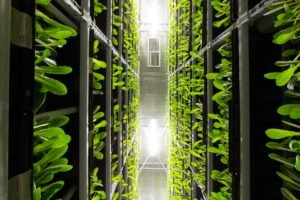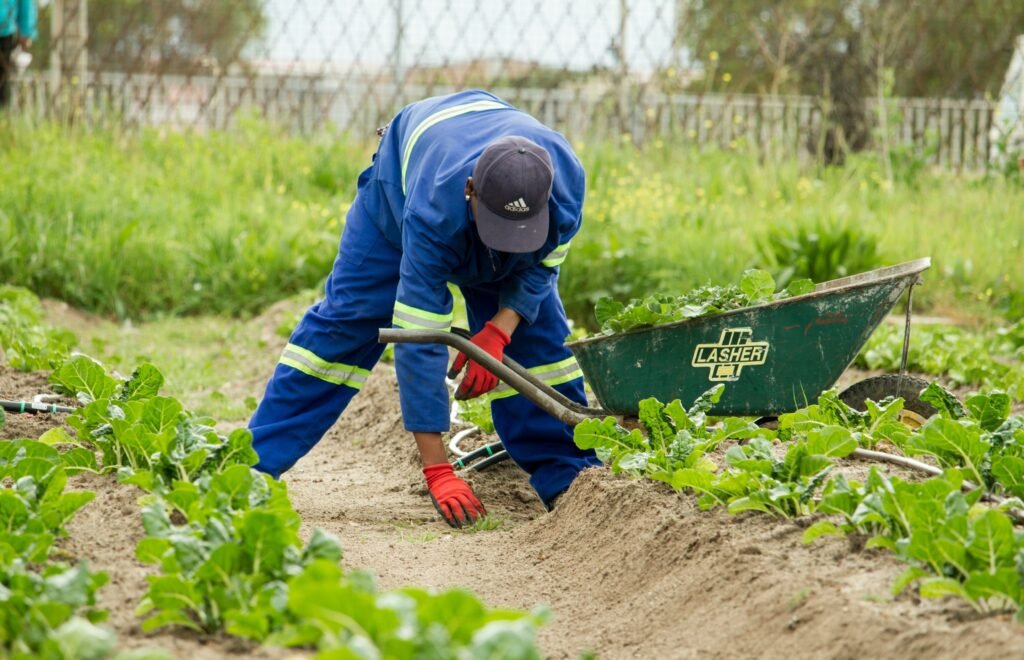Maximizing Urban Farming Potential: Exploring the Role of Sheds
Introduction
Urban farming is rapidly gaining traction as a sustainable solution to food production in densely populated areas. However, limited space and resources pose significant challenges to urban farmers. Sheds emerge as versatile assets in this dynamic environment and are pivotal in optimizing urban farming endeavors. By providing essential functions and opportunities, sheds contribute to maximizing the potential of urban farming initiatives.
Quick Tips for Shed Utilization in Urban Farming
- Optimize Space: Utilize vertical space within sheds for increased storage and farming capacity.
- Prioritize Climate Control: Implement natural ventilation and climate control mechanisms for optimal growing conditions.
- Integrate Sustainability: Incorporate rainwater harvesting systems and renewable energy sources to enhance sustainability.
- Engage the Community: Design sheds to blend seamlessly into urban landscapes and foster community involvement.
- Stay informed about local regulations and zoning ordinances to ensure adherence to urban farming guidelines.
The Versatility of Sheds in Urban Farming
 Sheds serve many purposes in urban farming, offering solutions to common challenges farmers face in urban environments. One of the primary functions of sheds is to provide storage solutions. Due to limited space, urban farmers often need help storing equipment, seeds, and fertilizers. Sheds offer a dedicated space for storing farming tools, machinery, and supplies, helping farmers stay organized and efficient.
Sheds serve many purposes in urban farming, offering solutions to common challenges farmers face in urban environments. One of the primary functions of sheds is to provide storage solutions. Due to limited space, urban farmers often need help storing equipment, seeds, and fertilizers. Sheds offer a dedicated space for storing farming tools, machinery, and supplies, helping farmers stay organized and efficient.
Moreover, sheds provide shelter for plants and livestock, protecting them from harsh weather conditions and creating microclimates conducive to growth. Farmers can enhance the growth conditions of their crops by regulating variables like temperature and humidity. This helps in maintaining the well-being and productivity of the plants. Additionally, sheds serve as workspaces for various farming activities, including seedling propagation, tool maintenance, and repair.
Furthermore, sheds integrate seamlessly with sustainable farming practices. Rainwater harvesting systems installed in sheds collect and store rainwater for irrigation, reducing reliance on municipal water sources. Similarly, sheds equipped with renewable energy sources such as solar panels or wind turbines contribute to reducing carbon footprints and promoting energy efficiency in urban farming operations.
Shed Design Considerations for Urban Farming
Designing sheds for urban farming requires careful consideration of space optimization, ventilation, and aesthetics. In densely populated urban areas, it’s essential to make the most of available space within sheds due to the high cost of real estate. Vertical storage solutions and modular designs allow farmers to make the most of limited space, accommodating diverse farming needs and maximizing productivity.
Ventilation and climate control are essential aspects of shed design, particularly in regions with extreme weather conditions. Natural ventilation systems, such as strategically placed windows and vents, help regulate airflow and maintain optimal growing conditions inside the shed. Additionally, temperature and humidity control mechanisms, such as fans and evaporative cooling systems, ensure the comfort and health of plants and livestock.
Aesthetics and community integration play significant roles in urban farming shed design. Blending sheds into the surrounding urban landscape enhances visual appeal and promotes community acceptance of urban farming initiatives. Moreover, incorporating shared spaces and community gardens around sheds fosters community engagement and collaboration, strengthening social ties and promoting local food production.
Case Studies: Shed Innovations in Urban Farming
 Several innovative shed designs have emerged in urban farming contexts, showcasing the versatility and adaptability of sheds to diverse environments and needs. Rooftop greenhouses, such as the renowned Brooklyn Grange in New York City, utilize underutilized rooftop spaces to create thriving urban farms. These innovative structures produce fresh produce and contribute to urban heat island mitigation and stormwater management.
Several innovative shed designs have emerged in urban farming contexts, showcasing the versatility and adaptability of sheds to diverse environments and needs. Rooftop greenhouses, such as the renowned Brooklyn Grange in New York City, utilize underutilized rooftop spaces to create thriving urban farms. These innovative structures produce fresh produce and contribute to urban heat island mitigation and stormwater management.
Community garden sheds, exemplified by projects like The Shed Project in Portland, Oregon, serve as central hubs for community gardening initiatives. These communal areas offer assistance and amenities to residents keen on cultivating food, nurturing a feeling of togetherness among neighbors, and advocating for eco-friendly food methods.
Compact shed farms, such as those found in Tokyo’s vertical farming initiatives, maximize space efficiency by integrating farming activities vertically. These compact structures utilize advanced technologies such as hydroponics and vertical farming systems to produce diverse crops in densely populated urban areas, addressing food security concerns and promoting self-sufficiency.
Challenges and Future Directions
Urban farming sheds face several challenges and opportunities for improvement, paving the way for future developments and advancements in the field.
Land Use Regulations and Zoning: One of the primary challenges for urban farming sheds is navigating complex land use regulations and zoning laws. Many metropolitan areas have stringent rules regarding agricultural activities, making it difficult for farmers to establish and operate sheds for farming purposes. Overcoming these regulatory barriers requires advocacy efforts to promote policies that support urban agriculture and shed-based farming initiatives. Collaborative efforts between policymakers, urban planners, and community stakeholders are essential to creating conducive environments for urban farming sheds to thrive.
Economic Viability and Funding: Another challenge urban farming sheds face is operations’ financial viability. The initial investment and operating costs of establishing and maintaining sheds can be prohibitive for small-scale farmers, especially in urban areas with high real estate prices. Access to funding and financial incentives is crucial for alleviating these financial burdens and promoting the adoption of shed-based farming practices. Government grants, loans, and subsidies can help offset costs and encourage investment in sustainable urban agriculture initiatives.
Technological Advancements in Shed Design: Technological advancements present significant opportunities for enhancing the efficiency and productivity of urban farming sheds. Integrating intelligent technologies such as automation, sensor technology, and data analytics into shed infrastructure enables real-time monitoring and optimization of farming activities. Intelligent irrigation systems, climate control devices, and inventory management solutions streamline operations, leading to higher yields and reduced resource consumption. Additionally, advancements in materials science and construction techniques enable the development of more durable, energy-efficient, and aesthetically pleasing shed designs that meet the diverse needs of urban farmers.
Community Education and Involvement: Community education and involvement are critical for the long-term success of shed-based urban farming initiatives. Educating the public about the benefits of urban farming and sheds fosters more significant support and participation in local food production efforts. Outreach programs, workshops, and educational resources raise awareness about sustainable farming practices, healthy eating habits, and environmental stewardship. Engaging schools, community centers, and local organizations in urban farming promotes social cohesion and actively empowers residents to shape their food systems.
Additional Information about the Role of Sheds in Urban Farming

- Diversification of Urban Agriculture: Sheds facilitate the diversification of urban agriculture by providing space for various farming activities beyond traditional crop cultivation. Urban farmers can use sheds to raise small livestock such as chickens, rabbits, or bees, contributing to a more diverse and sustainable food production system. Additionally, sheds enable the production of value-added products such as honey, eggs, or handmade crafts, allowing farmers to generate additional income and create niche markets within their communities.
- Season Extension and Year-Round Production: Sheds equipped with climate control systems, such as heaters or cooling units, enable urban farmers to extend the growing season and produce crops year-round. Farmers can minimize the impact of unfavorable weather patterns and temperature fluctuations by establishing enclosed spaces within sheds. This approach guarantees stable crop yields and a steady provision of fresh produce to nearby markets. Employing methods like high tunnels or hoop houses connected to sheds extends the growing season, amplifying the efficiency and durability of urban farming endeavors. Consequently, farmers gain the capacity to cultivate crops beyond their typical seasonal constraints.
- Education and Training Hub: Sheds serve as educational and training hubs for aspiring urban farmers, providing hands-on learning experiences and practical skills development opportunities. Many urban farming initiatives offer workshops, apprenticeships, and internship programs in sheds, where participants learn about sustainable farming practices, soil health, pest management, and crop rotation techniques. By engaging with the community and sharing knowledge and resources, sheds empower individuals to become active participants in local food systems and advocates for sustainable agriculture.
- Food Processing and Value-Added Production: Sheds equipped with processing facilities and storage areas enable urban farmers to add value to their products through food processing and preservation techniques. Farmers can use sheds to wash, sort, and pack fresh produce and prepare value-added products such as jams, pickles, or dried herbs. Farmers can enhance their market competitiveness and attract more customers seeking locally sourced, artisanal food products by improving the value of their offerings. This means adding unique qualities or benefits to their products that set them apart from others, ultimately allowing farmers to secure a more significant portion of consumer demand. Additionally, sheds provide space for storing harvested crops and processed goods, ensuring their quality and freshness before distribution to markets or community-supported agriculture (CSA) subscribers.
- Community Resilience and Food Security: Sheds are vital in building community resilience and enhancing food security in urban areas by promoting local food production and distribution networks. Community garden sheds, in particular, serve as gathering spaces where residents come together to grow food, share resources, and strengthen social bonds. By fostering community engagement and collaboration, sheds contribute to developing vibrant and resilient neighborhoods that are better equipped to withstand external shocks and disruptions to the food supply chain. Furthermore, sheds empower urban agriculturalists to cultivate wholesome, locally grown produce, lessening reliance on imported products and enhancing the availability of nutritious food choices for every community member, irrespective of financial circumstances or social standing.
In summary, sheds play a multifaceted role in urban farming, providing essential infrastructure and support for diverse farming activities, education and training programs, food processing and value-added production, and community resilience and food security initiatives. By harnessing the potential of sheds to enhance productivity, sustainability, and community engagement, urban farmers can create thriving agricultural ecosystems that contribute to the health and well-being of both people and the planet.
Conclusion
In conclusion, sheds play a crucial role in maximizing the potential of urban farming initiatives by providing essential functions and opportunities for farmers in densely populated areas. From storage solutions and shelter for plants and livestock to workspace for farming activities and integration with sustainable practices, sheds offer versatile solutions to common challenges faced by urban farmers.
Urban farmers can create productive and resilient farming environments that contribute to food security, environmental sustainability, and community well-being by optimizing shed design for space efficiency, ventilation, and aesthetics. Despite facing challenges related to regulations, funding, and technological advancements, the future of shed-based urban farming looks promising with continued innovation, collaboration, and community involvement.
Comparison of Shed Design Considerations
| Design Considerations | Description |
| Space Optimization | Utilize vertical space and modular designs to maximize storage capacity and accommodate diverse farming needs. |
| Ventilation and Climate Control | Implement natural ventilation systems and temperature/humidity control mechanisms to maintain optimal growing conditions inside the shed. |
| Aesthetics and Community Integration | Blend sheds into urban landscapes and incorporate shared spaces/community gardens to enhance visual appeal and promote community engagement. |
| Sustainability Features | Incorporate rainwater collection systems and renewable energy technologies like solar panels or wind turbines to boost sustainability efforts and minimize ecological footprints.
|
References
- Brooklyn Grange. (n.d.). About Us. Retrieved from https://www.brooklyngrangefarm.com/about
- The Shed Project. (n.d.). Our Story. Retrieved from https://www.theshedprojectpdx.org/our-story
- Urban Farming Tokyo. (n.d.). Projects. Retrieved from https://urbanfarmingtokyo.jp/en/projects/
Note: This article provides comprehensive insights into the role of sheds in urban farming, covering various aspects such as their versatility, design considerations, case studies, challenges, and future directions. Including quick tips and a table comparing shed design considerations enhances the readability and practicality of the content, making it a valuable resource for urban farmers, policymakers, and community stakeholders.
- Splash of Color: Creative Garden Shed Painting Ideas to Transform Your Backyard Oasis
- The Benefits and Types of Mobile Home Sheds
- History of the World in 100 Sheds
- Garden Shed Roof Repair Guide: Fix Leaks Quickly and Effectively
- Effective Garden Shed Pest Control Methods
- Designing Your Perfect Custom Garden Shed: A Comprehensive Guide
- Best Large Garden Sheds for Your Backyard: Discover the Perfect Storage Solution
- Transform Your Garden Shed: Creative Painting Ideas to Refresh Your Outdoor Space
- Top Small Garden Shed Ideas: Maximizing Your Garden Space
- The Pros and Cons of Metal Garden Sheds: Is It the Right Choice for You?


Leave a Reply